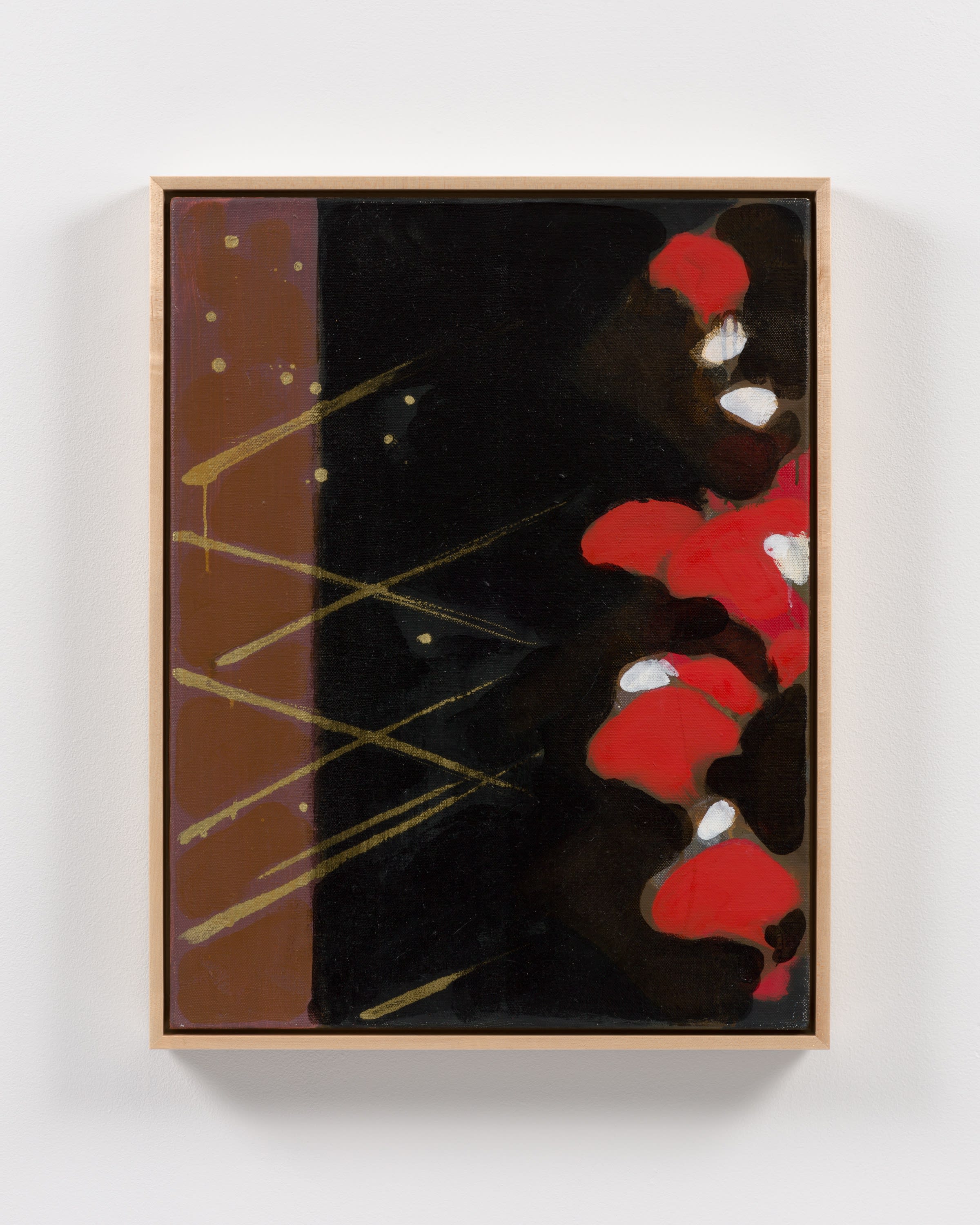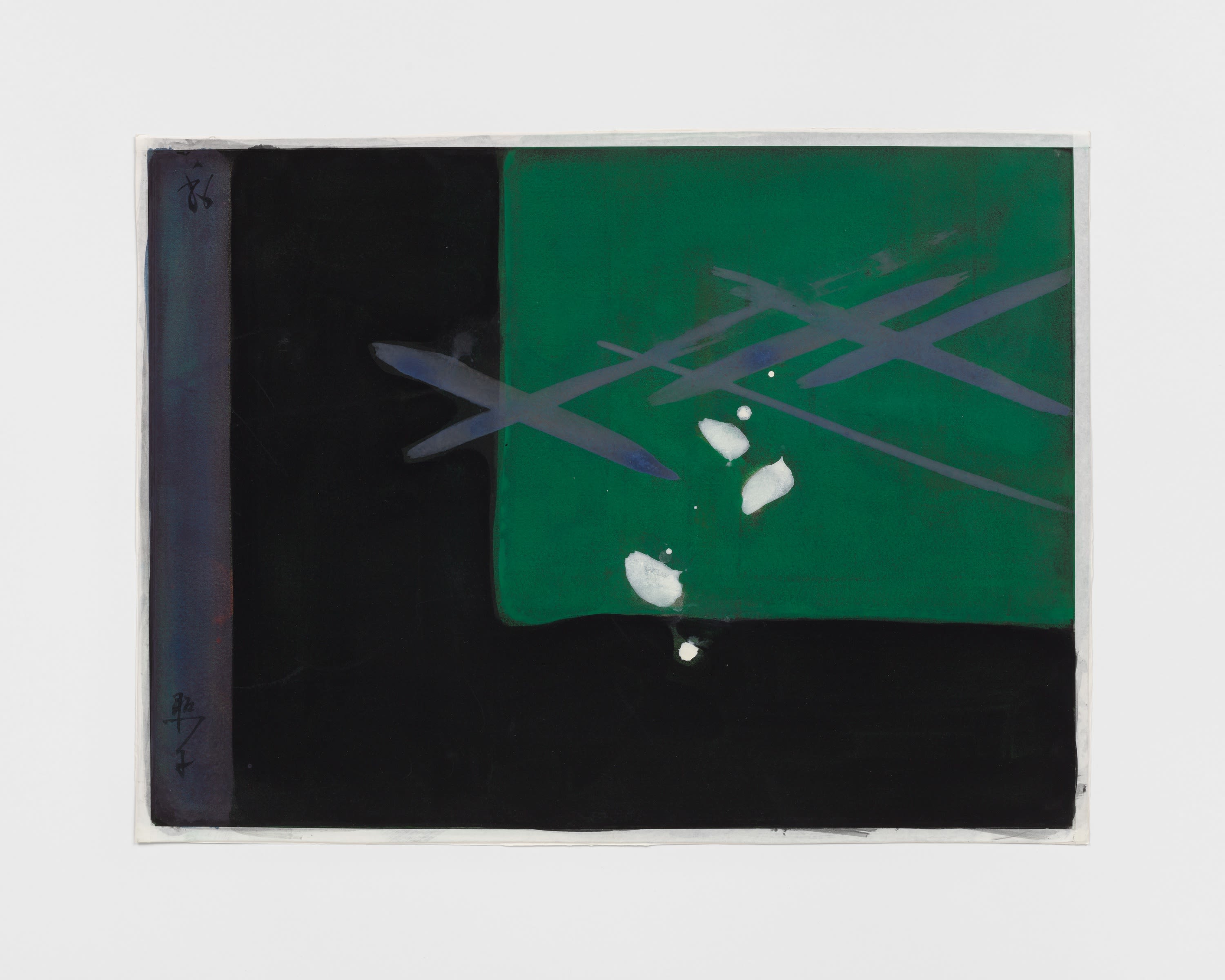
This spring, the retrospective exhibition Teruko Yokoi: Noh Theater at Hollis Taggart, with the support of Kent Fine Art, offers a vibrant homage to a compelling artist and visual poet. Running from May 1 to June 14, 2025, this Teruko Yokoi exhibition spotlights the artistic legacy of a painter whose work bridged continents and cultures, weaving together Japanese modern art and Western abstraction.
Born in Japan in 1924, Teruko Yokoi’s artistic journey led her from Tokyo to San Francisco and New York, and later to Paris and Bern, Switzerland. In the United States, she was influenced by American post-war modernism and became associated with the Abstract Expressionist movement, studying with Hans Hofmann. With her then-husband, renowned painter Sam Francis, she shared a studio at the Chelsea Hotel, in the midst of the New York School.

Teruko Yokoi, interview on San Francisco TV, 1955
Despite the challenges of being an immigrant and a woman in a male-dominated art world, Yokoi carved her place in the art world and developed a distinct voice—characterized by elegance, dynamism, and emotional depth. Throughout her career, Yokoi carried traces of her cultural roots which she integrated into her interpretation of Western modernism. A master watercolor artist and innovator in mixed media, she infused her work with subtle references to Japanese aesthetics, philosophy, and tradition.
Noh Theater: Cultural Memory and Visual Poetry
Noh Theater explores this thread explicitly, creating a dialogue between Yokoi’s contemporary exploration and the formalized drama of traditional Japanese Noh theater, which is not only a subject, but also a conceptual framework through which to understand her work. Dating back to the fourteenth century, Noh drama is deeply poetic, marked by minimalist yet powerful expression and featuring atmospheric landscapes. Like the ritualized gestures of the masked performers, Yokoi’s brushwork both hides and reveals, between meditative precision and spontaneous expression, conjuring ambience and shifting emotions through texture, form, and layered pigment.

Teruko Yokoi, "Untitled", 1970-2007
A prominent element in the exhibition is the use of mulberry Washi tea paper—once used in Japanese tea ceremonies and Noh theater scriptbooks—collaged into abstract landscapes. These fragments of cultural memory serve as both material and metaphor, evoking the artist’s longing for home, even as she built a new life in Switzerland. In these works, the viewer encounters moons, mountains, gardens, and calligraphic fragments from antique Japanese literature—visual poems that reflect the passage of time and the emotional echoes of place.
This 2025 Teruko Yokoi exhibition is a retrospective and a reminder of how much art history has yet to fully acknowledge. As interest grows in the overlooked contributions of underrecognized women artists, Noh Theater affirms Yokoi’s rightful place in the canon, bridging Western and Japanese modern art. Her works hum with a quiet intensity that continues to resonate today, marking her as a singular voice in the evolving conversation between East and West.

Teruko Yokoi, "Snow as Darkness Falls", 1986, Egg tempera on paper, 15 1/4 x 20 1/2 in. / 38.7 x 52.1 cm

